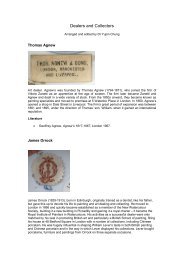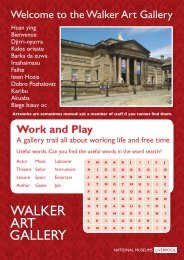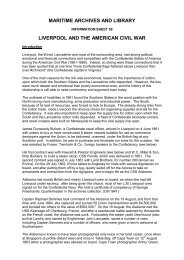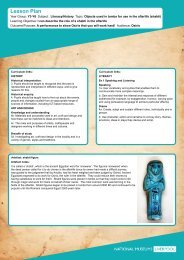Wirral Part 4 - National Museums Liverpool
Wirral Part 4 - National Museums Liverpool
Wirral Part 4 - National Museums Liverpool
You also want an ePaper? Increase the reach of your titles
YUMPU automatically turns print PDFs into web optimized ePapers that Google loves.
There was, at the end of June 2005, a count of 4996 records in the MHCP Access<br />
database with corresponding polygons. The totals reflected the differing approaches<br />
used between the pilot survey and the work on <strong>Wirral</strong> and St Helens District. As of<br />
June 2005) the database comprised:<br />
• <strong>Liverpool</strong> (pilot) district: completed with 929 records<br />
• <strong>Wirral</strong> (second district, urban area only) incomplete with 3035 records<br />
• St Helens complete with 1032 records<br />
Apart from the greater character definition included in the <strong>Wirral</strong> data capture, the<br />
nature of settlement was very different from that of <strong>Liverpool</strong>. The more mixed built up<br />
area of the east side meant that a greater number of polygons were drawn to capture<br />
the different character types covering smaller areas. Work on St Helens had<br />
established that the approach to recording the rural landscape was appropriate for<br />
application to those areas of Sefton and Knowsley<br />
The project was essentially suspended (with the loss of the then Characterisation<br />
Project Officer) in June then, in November, the ending of funding for the split post of<br />
part Planning Assistant (3 dys Sefton & <strong>Liverpool</strong>) / part Project Officer. The continued<br />
existence of the jointly funded Merseyside Archaeological Service and Archaeological<br />
Officer post was finally agreed to run from 2005-2009. The characterisation data<br />
capture phase of the project was not revived until April 2008 with the appointment of a<br />
new Characterisation Project officer. However, some project outreach took place from<br />
2005-7 through liaison with the Historic Environment of <strong>Liverpool</strong> Project (HELP),<br />
presentations and in 2006 and 2007, activities as part of the annual Council for<br />
Archaeology <strong>National</strong> Archaeology activities in Merseyside.<br />
Problems identified during review<br />
The pre-existing (2003-2005) MCHP was reviewed in May/June 2008 and found to<br />
have a number of problems which – particularly ones associated with the changes in<br />
methodology, recording, querying and mapping; all symptomatic of project<br />
development and pilot phases:<br />
• The initial recording was inconsistent and biased. Separate (and disparate)<br />
recording methodologies were used for the three districts. It was a found that<br />
searches / queries could not be done for these districts with any degree of<br />
consistency due to their differences in recording and varying depths of study<br />
and/or reliability.<br />
311



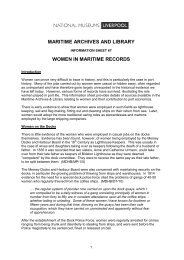
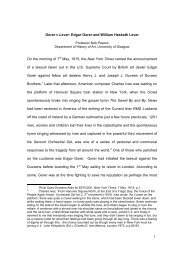
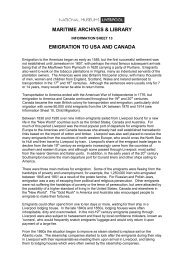
![Ancient Egypt trail [227kb .pdf] - National Museums Liverpool](https://img.yumpu.com/48998817/1/184x260/ancient-egypt-trail-227kb-pdf-national-museums-liverpool.jpg?quality=85)

